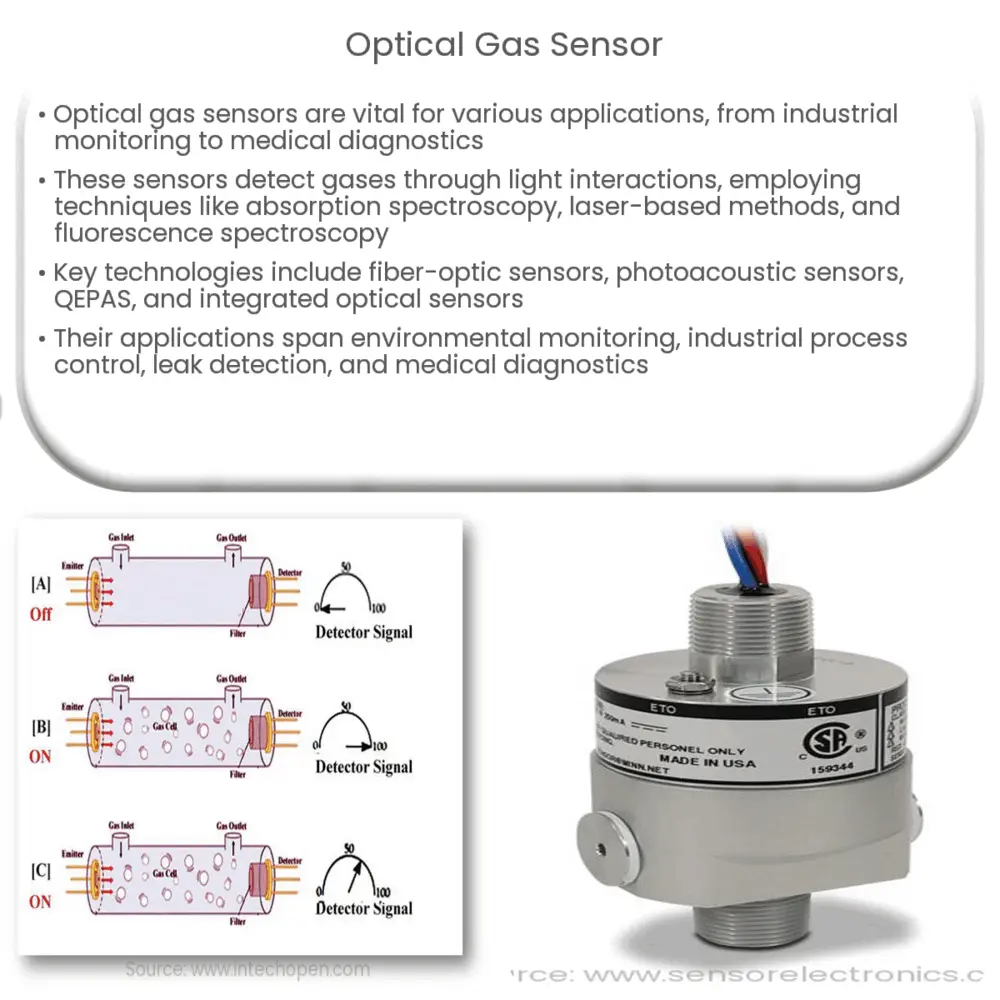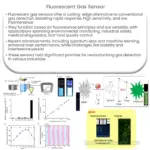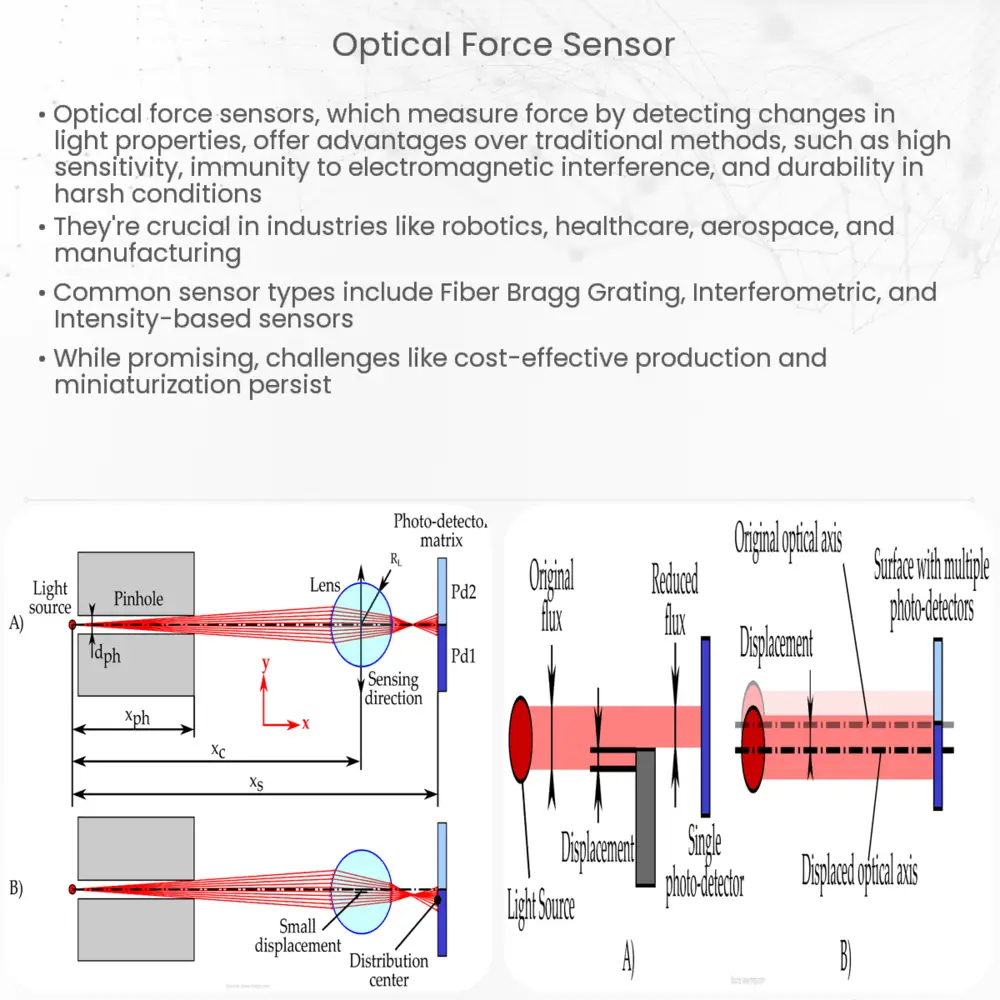Optical gas sensors detect and quantify gases using light interactions, offering high sensitivity and selectivity for diverse applications.

Optical Gas Sensors: A Comprehensive Overview
Introduction
Optical gas sensors are a crucial component in a wide range of industrial, environmental, and medical applications, providing accurate and reliable monitoring of gaseous species. The demand for these sensors is increasing due to the ever-growing need for real-time monitoring and remote sensing capabilities. This article will delve into the fundamentals of optical gas sensing, the various sensing technologies, and their applications across different industries.
Principles of Optical Gas Sensing
Optical gas sensors rely on the interaction between light and gaseous species to detect and quantify the concentration of a specific gas. This interaction can result in changes to the light’s properties, such as absorption, scattering, or emission. By monitoring these changes, the sensor can provide information on the gas’s concentration and presence. The most common principles employed in optical gas sensing include absorption spectroscopy, laser-based techniques, and fluorescence spectroscopy.
Absorption Spectroscopy
Absorption spectroscopy is a widely used technique in optical gas sensing that measures the absorption of light by gaseous species. The Beer-Lambert law governs the relationship between light absorption and gas concentration. According to this law, the amount of light absorbed by a gas is proportional to its concentration and path length. By measuring the decrease in light intensity after passing through a gas sample, the sensor can determine the concentration of the target gas.
Laser-based Techniques
Laser-based optical gas sensors employ highly monochromatic and coherent light sources to enable highly sensitive and selective gas detection. These techniques typically involve tuning the laser’s wavelength to match the specific absorption features of the target gas. Popular laser-based techniques include tunable diode laser absorption spectroscopy (TDLAS) and cavity-enhanced techniques, such as cavity ring-down spectroscopy (CRDS).
Fluorescence Spectroscopy
Fluorescence spectroscopy is an optical gas sensing technique based on the emission of light by gas molecules after absorbing energy from incident photons. When the gas molecules return to their ground state, they emit fluorescent light at a specific wavelength. By detecting this emitted light, the sensor can determine the presence and concentration of the target gas. This technique is particularly useful for detecting trace gases and for applications requiring high sensitivity.
Optical Gas Sensor Technologies
Various technologies have been developed to implement the principles of optical gas sensing, each with its advantages and limitations. Some of the most prominent optical gas sensor technologies include:
- Fiber-optic sensors
- Photoacoustic sensors
- Quartz-enhanced photoacoustic sensors (QEPAS)
- Integrated optical sensors
These technologies offer different levels of sensitivity, selectivity, and response time, making them suitable for diverse applications and environments.
Fiber-Optic Sensors
Fiber-optic sensors are a versatile and robust class of optical gas sensors, employing optical fibers to transmit and receive light signals. They offer several advantages, including immunity to electromagnetic interference, remote sensing capabilities, and the potential for multiplexing. Fiber-optic sensors can be designed based on absorption, fluorescence, or interferometric principles and are widely used in applications such as environmental monitoring, industrial process control, and safety systems.
Photoacoustic Sensors
Photoacoustic sensors are a unique class of optical gas sensors that exploit the photoacoustic effect, which occurs when gas molecules absorb light and convert it into sound waves. These sound waves can be detected using a sensitive microphone, providing a measure of the target gas’s concentration. Photoacoustic sensors offer high sensitivity, selectivity, and a rapid response time, making them suitable for various applications, such as leak detection, air quality monitoring, and medical diagnostics.
Quartz-Enhanced Photoacoustic Sensors (QEPAS)
QEPAS is a variation of the photoacoustic sensing technique that utilizes a quartz tuning fork as an acoustic transducer. By detecting the mechanical vibrations induced by the photoacoustic effect, QEPAS offers improved sensitivity and reduced noise compared to traditional photoacoustic sensors. This technology has gained significant interest in recent years, with applications in trace gas detection, greenhouse gas monitoring, and industrial process control.
Integrated Optical Sensors
Integrated optical sensors are miniaturized devices that incorporate all the essential components for optical gas sensing, such as light sources, waveguides, and detectors, onto a single chip. This integration results in compact, lightweight, and low-power sensors that are well-suited for portable and wearable devices. Integrated optical sensors have shown great potential in various applications, including environmental monitoring, personal safety devices, and medical diagnostics.
Applications of Optical Gas Sensors
Optical gas sensors have found widespread use across numerous industries and applications, including:
- Environmental Monitoring: Tracking air quality, greenhouse gas emissions, and pollution levels in both outdoor and indoor environments.
- Industrial Process Control: Monitoring and controlling gas concentrations in chemical processes, combustion systems, and gas pipelines to ensure safety and optimize efficiency.
- Leak Detection: Identifying gas leaks in pipelines, storage tanks, and industrial facilities to prevent accidents and environmental hazards.
- Medical Diagnostics: Analyzing exhaled breath samples to diagnose diseases and monitor physiological conditions, such as asthma, diabetes, and infections.
Conclusion
Optical gas sensors have emerged as a critical technology for detecting and quantifying gaseous species in various applications. With their high sensitivity, selectivity, and potential for miniaturization, they offer numerous advantages over traditional sensing methods. As research and development continue, we can expect further improvements in optical gas sensing technology, leading to even more accurate, reliable, and versatile sensors in the future.




